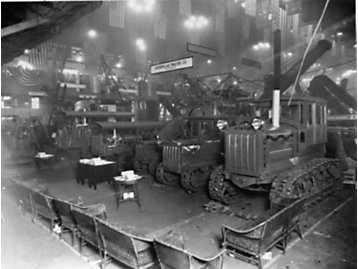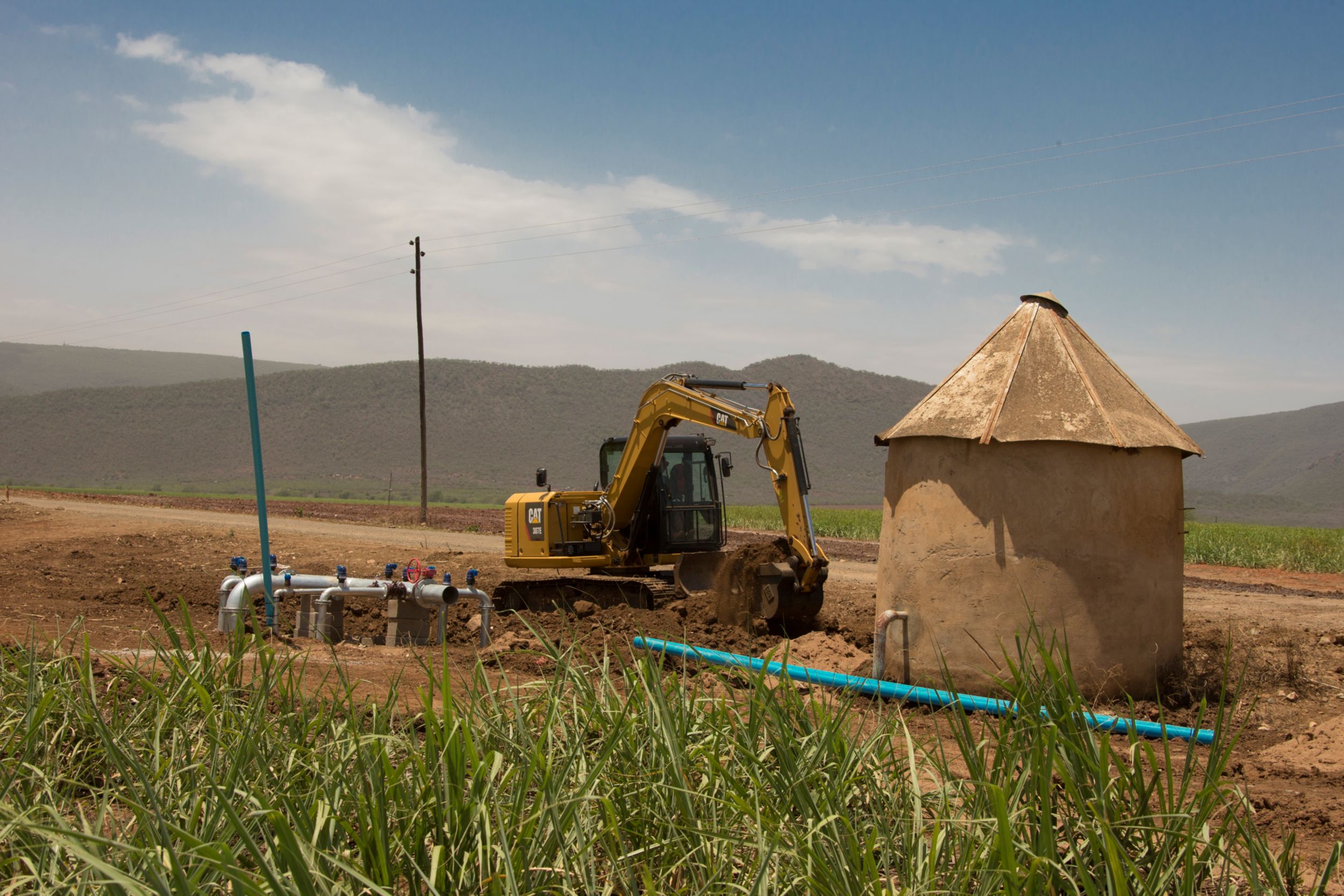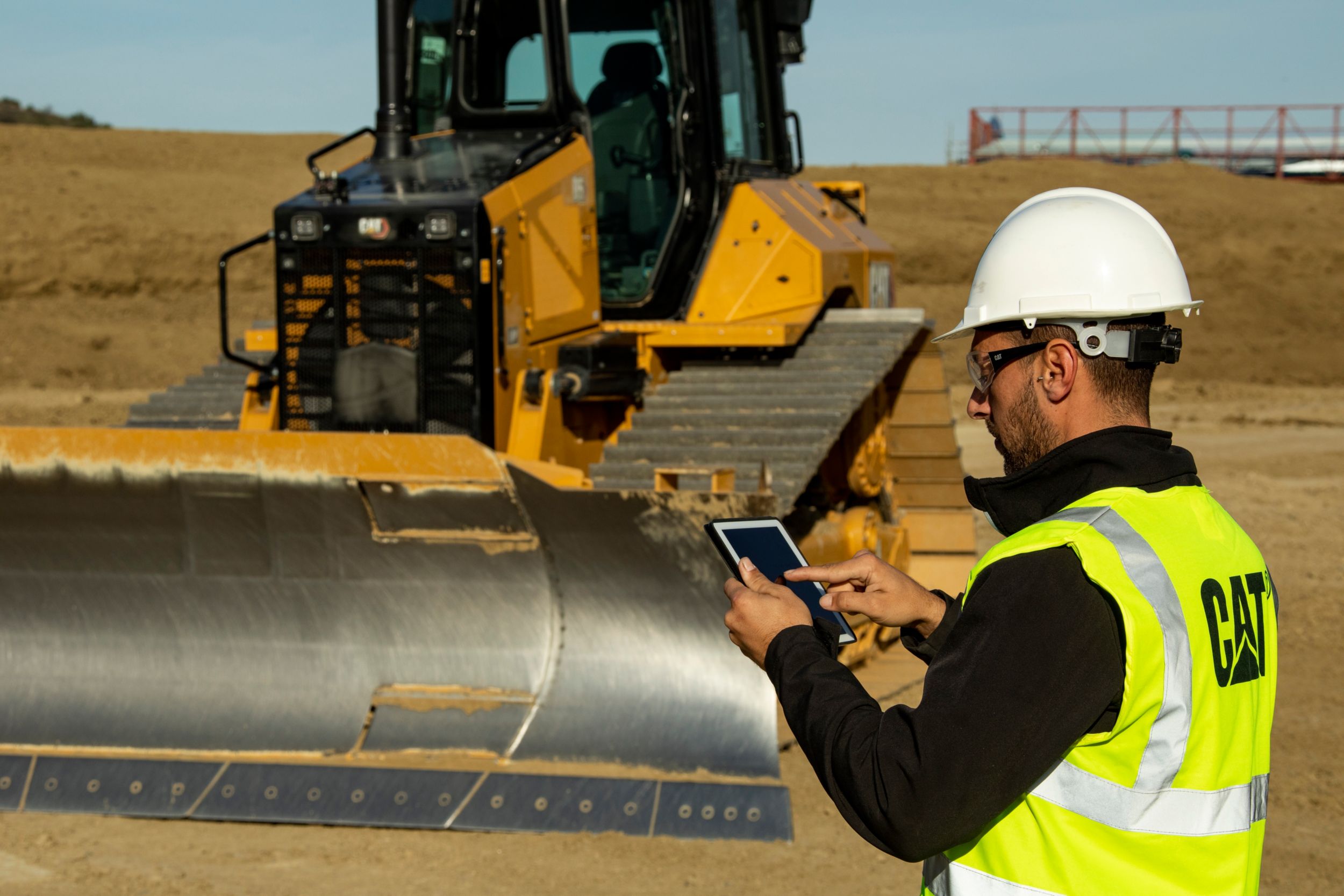Caterpillar was built on innovation that helped our customers succeed. Since then, we’ve continued our legacy – creating industry-leading products, technologies and services that help our customers do their best work and build the world around us.
Our centennial milestone is an opportunity to celebrate the achievements of our first 100 years while looking toward the future. Our purpose is to build a better, more sustainable world. And it guides everything we do.
In the Beginning
During the mid-19th century, our founders, C.L. Best and Benjamin Holt, were competitors on parallel paths.
Benjamin Holt invented a steam tractor to keep farmers working and more productive longer and cheaper than horses could. Holt was a prolific inventor and owned more than 45 patents. The people in Stockton, California, knew him as “Uncle Ben.”
Meanwhile, C.L. Best began a small startup called the C.L. Best Gas Traction Co, which initially focused on round-wheel tractors. But by the end of 1912, Best had a tracklayer ready for production – the C.L. Best 70 Tracklayer, featuring a Best-designed engine. Best’s products soon included the “Tracklayer Creed,” a brand promise of superior quality and outstanding support. Read about our founders and the companies they built here.


Emergence of Tracks and the Caterpillar Name
The invention of the track-type tractor – today’s dozer – is Benjamin Holt’s most significant engineering invention. Replacing wheels with tracks allowed heavy steam tractors to more easily prepare agricultural fields without getting stuck in soggy peat soil. Learn how innovation marked the beginning of our flagship product and influenced our company’s name, synonymous with earthmoving equipment.
From Steam to Gasoline
While Holt was famous for developing the tracks, C.L. Best focused his inventions on early gasoline and undercarriage technology, improving product reliability and performance. Some of these early features remain part of today’s Caterpillar tractor DNA.
Switching from steam to gasoline was a substantial fuel transition our founders helped customers navigate more than 100 years ago.
The Merger: Caterpillar Tractor Co. is Born
In the mid-1800s, our founders had their own companies, and each was creating innovative lines of farm equipment and other types of machinery. Years passed and both companies grew, creating impressive machines with principal concentration on tractors and harvesters.
By the end of World War I, Daniel Best’s company had a solid financial status, an advanced tractor design and the foundation of a strong dealer group. Holt, however, had a worldwide reputation, the “Caterpillar” trademark, larger factories, and a harvester line that had been around for 40 years.
Blending the best of both worlds, the two companies merged in 1925. And the Caterpillar Tractor Co. was born. Learn more here.
We Haven't Always Been Yellow
In 1925, we adopted a red wavy "Caterpillar" logo, and our machines were painted battleship gray. But they didn't stay that way for long. Our machines went from gray with red trim to Hi-Way Yellow with black trim in 1931.
In 1979, Hi-Way Yellow was discontinued and replaced with Caterpillar Yellow, the color our machines are still known for today. Although we continued making paint formula adjustments to ensure maximum durability and longevity, the yellow hue remains the same.
Check out the evolution of our machine trade dress and logos here. But it's true that not all Cat machines leave our factories yellow.
Growing Years, the Motor Grader and Diesel Technology
Soon after the creation of the Caterpillar Tractor Co. in 1925, the formation of a global dealer network made up of former Holt and Best dealers was complete. Cat dealers were focused on service from the beginning, and by 1928, air service was available for parts delivery.
In 1927, Caterpillar introduced its first new product, the Twenty Track-Type Tractor. Although the company felt the effects of the Great Depression, we continued to invest in products and technologies that were important to customers.
Russell Grader Manufacturing Company’s glade graders were frequently paired with Caterpillar tractors. In 1928, Caterpillar acquired Russell Grader and created the Road Machinery Division. The acquisition allowed us to produce the industry’s first true motor grader in 1931.
In addition, leaders like C.L. Best were committed to investing in diesel technology. In 1931, we began producing the Caterpillar Diesel Sixty Tractor. Ten of the first 25 Diesel Sixty Tractors built worked on the King Albert Canal – an 80-mile stretch from Antwerp to Liege, Belgium. The tractors worked daily during the nine-year construction phase.
History of Cat Power
Caterpillar recognized the strong potential of the engine business from the very beginning. But it wasn’t until the introduction of the Caterpillar diesel engine that the company’s power business took off.
At the Panama-Pacific International Exposition (later renamed The World's Fair) in 1915, Caterpillar senior leaders viewed large stationary diesel engines and recognized the potential. The company soon began developing its own diesel engines to replace gas counterparts in the company’s tractors and selling broadly to OEMs for use in power generation, industrial settings, and marine and other applications.
At the time, diesel fuel was about half the cost of gasoline. Since industrial applications often required engines to run around the clock, the savings were significant. In addition, diesel engines have other advantages, including increased power, durability and fuel economy. The result? In 1931, we completed the first diesel production model, and by 1937, we were the world’s largest producer of diesel engines.
It's a leadership position that Caterpillar retains today.


The Changing Face of Caterpillar's Workforce
In 1939, American’s involvement in World War II had a significant impact on the country’s economy and workforce. The unemployment rate dropped almost overnight as men left for the war overseas, and women were hired to replace them on assembly lines, changing the face of the workforce in factories across America.
At Caterpillar, it was no different. In addition to the workforce shortage, production was up as our machines were sent across the globe, supporting the U.S. and its allies on every continent except Antarctica. From 1942 to 1945, Caterpillar operated seven days a week, doubled its workforce, placed women on jobs in research, in the foundry and on assembly lines. The company manufactured special products, trained and sponsored enlisted men and built approximately 51,000 track-type tractors for the military.
Read the story of one young woman, Patricia Manning, who chose a second-shift factory job and became part of the influx of women who filled factory positions during World War II.
Restoring Communities and Helping Them Thrive
From tornadoes and earthquakes to devastating floods and forest fires, Caterpillar products and services have been assisting with disaster recovery and rebuilding throughout our history. Our equipment was used to aid in restoration efforts as early as the 1906 San Francisco earthquake and has continued to play an essential role in disaster recovery.
Since its founding in 1952, the Caterpillar Foundation has contributed to helping improve the lives of people around the world. As a company, Caterpillar works alongside our dealers and our customers to build the societal infrastructure needed to make the world run. Our Foundation focuses on the complementary human, natural and basic services infrastructure needed for individuals to thrive and communities to be resilient.

Historically Significant Caterpillar Contributions
Building roads, bridges, runways and seaports is vital to our modern infrastructure system. Since our beginning, Caterpillar products have helped support some of the world’s biggest and most famous infrastructure projects.
Customers rely on Caterpillar to help them build a better, more sustainable world. They used our products to help bring water to cities by building water transportation systems like the L.A. aqueduct with Holt machines. They built countless miles of roads like the U.S. Interstate system, the Baghdad Airport Road to allow faster movement of people and products. They climbed Pikes Peak under some of the harshest conditions to pave the way for progress. They constructed the Panama Canal to improve the speed of goods and cargo in sea transport and help work on subsequent expansions. They built dams and bridges, including the U.S.’s Hoover Dam and Golden Gate Bridge, and the Three Gorges Dam in China – creating some of the greatest engineering marvels in the world. One of our generator sets even helped power the Apollo 11 mission to the moon.
Cat® Reman and Our Sustainability Journey
Remanufacturing might just be one of the most important seeds Caterpillar planted in the early 1970s. What began as our narrowly focused effort to remanufacture a single series engine has grown exponentially. Today, manufacturers worldwide recognize and tout the economic and environmental benefits of remanufacturing. But in the early days, there wasn’t much of a model for the remanufacture of engines and other heavy equipment components in the United States.
Caterpillar had to make the mold.
In the simplest form, Cat Reman facilitates an exchange business where customers trade a used part for a remanufactured one at a fraction of the price of a new part. Caterpillar then takes the traded-in part (referred to as core), strips it down to the lowest-level component, and puts it through our remanufacturing process – during which it is turned into a completely new component with a new serial number. The remanufactured part can be sold as a remanufactured part or become part of a remanufactured sub-assembly or engine.
Remanufacturing is a perfect fit to support Caterpillar’s strategy of profitable growth, focusing on customer success by allowing customers to purchase like-new parts for a fraction of the cost of buying new.
In addition, remanufacturing cares for the planet by reducing the consumption of raw materials and conserves energy during the process – ultimately supporting our sustainability efforts. Sustainability is one of Caterpillar’s five Values in Action, in line with our legacy of sustainable innovation that spans nearly a century. Check it out here.



Our Code of Conduct
The early 1970s was a period of remarkable growth for Caterpillar. Sales surpassed $3 billion in 1973 and reached nearly $5 billion by 1975. With a workforce exceeding 80,000 global employees and substantial international expansion, the company was determined to address mounting inquiries from governments, public interest groups, and other third parties regarding its operational conduct.
The Code’s first edition was published on October 1, 1974, and was distributed internally to all Caterpillar managers. Aside from a single-page digest in the 1974 annual report, the Code was not initially promoted or distributed externally. However, that quickly changed when requests poured in from public, corporate, academic and government institutions, and the company decided to honor requests for copies.
The Code – known today as Our Values in Action – is the cornerstone of Caterpillar’s commitment to ethical conduct and responsible corporate citizenship, protecting our reputation and representing Caterpillar’s dedication to transparency and inclusivity. It remains our most important document and one that continues to stand the test of time.
10 Caterpillar Innovations That Changed the World
Dating back to Holt and Best, we’ve focused on innovative solutions that help our customers succeed. In fact, Holt and Best had over 100 patents. Caterpillar employees have followed in their footsteps, turning their passion for product development into solutions that create value and make the world a better place.



Collaborating on Mine Sites of the Future
From Cat MineStar™ Command for hauling autonomous technology, to strategic alliances to achieve zero emissions mining, we’re working with customers to help build new models for surface and underground mining. In 2021, we announced a strategic alliance agreement with Newmont Corporation, the world’s largest gold mining company, to deliver a fully connected, automated, zero-carbon emitting, end-to-end mining system.
Beyond Yellow Iron
To help our customer build a better, more sustainable world and meet the needs of a global population, we have focused on growing our business through a series of acquisitions to further diversify or products and services.
Caterpillar’s first acquisition dates to 1928, with the purchase of the Russell Grader Company that solidified our position in the motor grader industry. Before that, Russell blade graders were frequently paired with Caterpillar tractors. In April 1931, we introduced the first true motor grader – the Auto Patrol – designed as one machine instead of a separate tractor with a fitted grader frame.
Throughout our history, we’ve acquired companies and technologies to grow capabilities and expand our product line. In the 1980s, we purchased several companies to grow our ability to offer innovative solutions. In 1986, we changed our name from the Caterpillar Tractor Co. to Caterpillar Inc.
We build a better, more sustainable world.
Explore our PurposeOur strategy for long-term success for profitably growing sales volume centers on gaining a deeper understanding of customers through commercial excellence, being a leader in advanced technology and transforming how we work.
Explore our Strategy







































